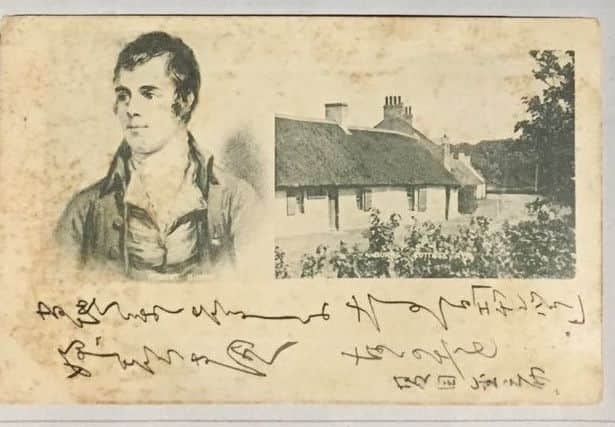How Scotland lit up star Japanese writer's life


The card, co-signed by Natsume and a Japanese engineer to a Japanese scholar of German literature then living in Berlin, states that the author had spent time in Edinburgh, as well as Ayr, in 1901.
However, literary scholars say the upbeat card shows a different side to Natsume’s time in Britain, which had previously been portrayed as bleak and lonely, leading his friends to fear at the time that he might attempt suicide. Scholar Damien Flanagan said: “It has always been thought that during the two years Soseki spent in the UK he hardly ever left London. But this postcard potentially explodes that idea.”
Advertisement
Hide AdHe said: “Scotland was an important place to Soseki, regarded as one of the major figures of Asian literature.He was largely miserable in London, but wrote glowingly of Scotland.To this day a steady stream of Japanese tourists every year come to Pitlochry, where he stayed in the autumn of 1902.”


Natsume is known for novels such as Wagahai wa Neko de Aru (I Am a Cat), Botchan and Kokoro. He is considered by many to be the greatest writer in modern Japanese history.
Natsume said that years in London, where he had been sent to study by the Japanese ministry of education, were “the most unpleasant of my life”. He is reported to have sent a blank piece of paper to the ministry as his annual report on his progress in London.
The postcard tells Fujishiro Teisuke, a Japanese scholar of German, that the pair were currently visiting the cottage and would be in Edinburgh on 1 November of that year. It emerged in a collection of more than 40 postcards received by Fujishiro during his time in Berlin.
Professor Koki Kawashima, president of Shumei University in Japan, who bought the postcard, said: “This is important because it shows Soseki visited Scotland twice”. Before discovering this postcard, Soseki was considerd to visit Scotland only once on October 1902 just before returning to Japan.
A museum solely dedicated to Soseki’s work, which contained over 2,000 items and was located opposite one of the lodging houses where Soseki stayed while in London from October 1901 to December 1902 closed two years ago.